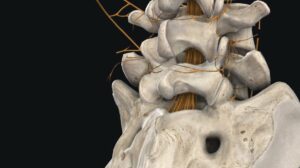NEW YORK (Reuters Health) – Endovascular therapy for acute ischemic stroke is at least as safe in nonintubated versus intubated patients, a small, retrospective study shows.
As reported online May 5th in Stroke, preliminary findings show patients with middle cerebral artery (MCA-M1) occlusion, who were not intubated during vessel recanalization, had significantly better outcomes than patients who were intubated, including lower mortality and final infarct volume.
Does this mean doctors should perform these procedures in acute stroke patients with conscious sedation, rather than general anesthesia and intubation?
These results can assure practitioners that the “nonintubated state” is noninferior to the “intubated state” in this situation, senior author Dr. Tudor Jovin from the University of Pittsburgh Medical Center told Reuters Health.
Dr. Jovin and colleagues analyzed outcomes in 126 patients with acute stroke due to MCA-M1 segment occlusion who received endovascular therapy between January 2006 and July 2009. In all patients, the researchers used the MERCI embolectomy device with or without low-dose tissue-type plasminogen activator. Seventy-three patients (58%) were not intubated.
The primary clinical endpoint for the study was in-hospital mortality plus favorable functional outcome, defined as a modified Rankin Score of 2 or less (on a scale of 0 to 6) at 3 to 6 months.
The researchers also recorded final infarct volumes on follow-up imaging, as well as intraprocedural complications, incidence of pneumonia during the first week, need for tracheostomy, and length of stay in the ICU.
Thirty-nine patients died (31%). The nonintubated state was significantly associated with in-hospital mortality (odds ratio 0.32, p = 0.01), good clinical outcome (OR 3.06, p = 0.04) and final infarct volume (OR = 0.25).
Nonintubated patients had a lower rate of intraprocedural complications (5/73, or 6%, vs 8/53, or 15%) although the difference was not statistically significant. They also had shorter mean ICU stays compared to intubated patients (3.2 vs 6.5 days).
The investigators say performing these procedures in nonintubated patients is an emerging concept in acute stroke and that more research is needed from a larger, prospective trial. “It is problematic to make strong recommendations based on this retrospective study,” Dr. Jovin said. “This data supports the practice of those operators who are willing to perform the procedure in the awake state.”
The investigators remind clinicians that acute stroke intervention should always be carried out in the presence of experienced anesthesia or critical care providers.
Reference:
Stroke 2010.




